History originally published in Road & Track Specials Ferrari 1990; republished by the author
Embedded in a sandbank at the end of the Mulsanne straight is a hell of a way to start a 24-hour race, particularly a Ferrari team car with the second-fastest time in qualifying and a real chance at an overall win. But here, before completing a single lap of the Sartre circuit, Mike Parkes is digging out the 4.0-liter GTO with a small shovel carried on board for such a calamity. Working by himself, per the rules, Parkes would need at least half-dozen laps to free the big red car and returned to the pits, sweating and exhausted, to turn the car over to co-driver Lorenzo Bandini.
This was to have been the cars moment in the sun, the race it was built for. It was a car created by a change in the rules. For 1962, the CSI decided that the Championship of Makes would be awarded to Grand Touring cars with engines of less than 3.0 liters. This, in fact, suited Ferrari perfectly. The new 250 GTO, with its 300-bhp, 3.0-liter V-12, would prove to be the class of the field. The GTO was ostensibly an option, and aerodynamic variation of the blunt-nosed 250 GT Berlinetta. With general chassis and engine specifications the same as the GT and its serial numbers intermingled among the “regular” GT production run, homologation of 39 cars against requirement of 100 could then be rationalized. To emphasize this point, the new special-body GT was called a homologated grand tourer. Or in Italian, gran turismo omologato.
The story of Mike Parke’s “4.0-liter GTO” begins with the fears of the organizers of Nürburgring, Sebring and especially Le Mans, that GT racing would not present enough of a spectacle to draw fans accustomed to watching sports car competition. Thus, a category for 4.0-liter prototypes, officially the Challenge Mondial de Vetesse et d’Endurance, was added for 1962. Although Enzo Ferreri had initially denied interest in the class, he had a car ready for the Nürburgring 1000-km race in May.
This car, serial number 3765 LM, was listed as a Type 330 GT Experimental and was to most most appearances and most mechanical specifications standard GTO. However, it had an oversize bulge on the hood covering the trio of Weber twin-throat carburetors on what was essentially a 400 Superamerica engine brought up to Testa Rossa specifications. Though not longer than a 3.0-liter, the engine’s other external dimensions were larger and the top of the intake manifold higher. Instead of a five speed transmission, 4.0-liter made do with a four-speed, but otherwise it was equipped as a typical GTO, with a 2400-mm (94.4-in.) wheelbase and sporting a tube chassis.
Front suspension was composed of unequal length forged a-arms with coil springs, anti-roll bar and then-new Koni adjustable shocks. A live axle on semielliptic’s was at the rear. Allegedly, GTO project engineer Giotto Bizzarini wanted the limited-slip rear axle suspended by coil springs but was overruled by Enzo Ferrari, who believed that would have made homologation difficult. But Bizzarini got his way, however, by adding small helper springs – compensatoros – to the rear Konis. Additional rear axle location was provided by trailing arms and Watt linkage. Because axle ratios were difficult to change in the field, fine-tuning of engine speed was done by wheel selection, with 15-and 16-in Boranni wire wheels available, the larger size to be used at the Nürburgring and Le Mans.
The driver sat on the left, and the gearshift sat high on the transmission tunnel in a classic Ferrari slotted gate. A half-dozen gauges were visible through the wood rimmed steering wheel: a large, 10,000-RPM tachometer was centered between gauges for fuel pressure and fuel level, a combined water temperature, oil pressure and oil temperature gauge sat in a crackle-painted oval pod. Essential switches and knobs completed the dash in the stark, un-upholstered interior.
The body, normal GTO except for the taller hood bulge, was light-gauge aluminum. Because it was an early car, 3765 LM’s ducktail spoiler was grafted on rather than blended in. The nose had the GTO’s ingenious solution for the conflicting needs of cooling and aerodynamics. Three D -shaped scoops above the nominal radiator opening had removable covers, held on by Dzus fasteners, so the scoops could be open or closed, depending on anticipated weather and race speed; at the rainy Nürnberg they were closed, at Le Mans, open. Above the three D-scoops, and other D-shape opening provided access to the radiator filler. Twin slots on the side allowed the exit of hot under hood air, and an opening in the rear fender aided brake cooling by letting air out.
The headlights were under plexiglas, the same material used for the backlight and sliding side windows (instead of the roll-up windows of the 250 GT). The windshield was laminated glass. Two small plexiglas scoops on the hood fed cockpit ventilation ducts. The trunk was filled by the spare tire and the fuel filler pipe, the trunk lid neatly shaped around the fuel filler cap. Tools were carried in a leather bag in the passenger’s foot well, as were the jack, flashlight, small shovel and wire mesh to slip under the tires to get out of sand.
The 4.0-liter GTO was assigned to Mike Parkes (he may have influenced Ferrari, who liked him, to build it) and Willy Mairesse, who used the engine’s estimated 375 horsepower to finish second in the rain behind Phil Hill and Olivier Gendebien in the less powerful but more agile V-6-powered 246 SP.
Hill and Gendebien’s mid-engine Nürnbergring mount may have been the handwriting on the wall for the big front-engine cars, before Le Mans the pair was put in an ugly concoction of a Testa Rossa chassis with independent rear suspension, one of the most ungainly, cobbled-up bodies ever to wear the prancing horse. The engine was a 4.0-liter V-12 identical to the one in Parkes’s Nürburgring racecar, except it was equipped with six Webbers.
Parkes was back in the 4.0-liter GTO for Le Mans, teamed with Lorenzo Bandini. Like Hills hot rod, Parkes’s GTO engine was up-rated to six carbs for power and top speed on the Mulsanne straight.
Parkes didn’t go much beyond the Mulsanne before he was in trouble, despite running well for the first seven or so miles. At the 4:00 p.m. start, Tony Settember was off first in a stock Corvette; he was overhauled before the first turn by Graham Hill in the factory Aston Martin. As the smoke and the dust of the start gave way to power and speed, the order yielded to the race favorites, Graham Hill still leading in the Aston, Parkes in the 4.0 liter GTO and Gendebien in the 330P. At least that’s how most accounts have it. But stories begin to vary as the Mulsanne corner is approached.
For example, Dominique Pascal writes in Ferraris at Le Mans (1984) that Parkes “drove into the sand at Mulsanne, being obstructed by Graham Hills Aston Martin.” On the other hand, Britain’s Autosport (June 29, 1962), says “Parkes and Gendebien closed up on the green Aston, and the latter snapped into second place on the Mulsanne straight, cutting in front of Parkes as they approached the corner. The unfortunate Parkes had to do some last-minute wheel-twiddling, partially lost control and ended up in the sandbanks.” Henry Manny reported “Road & Track, September 1962), “… On the Mulsanne straight… Parkes pulled past Graham Hill into the lead… Watchers at Mulsanne corner, though, got a bit of a thrill as Parkes arrived with all four locked up and plopped into the infamous sandbank….” And, finally, Parkes himself later told Griff Borgerson “Road & Track, October 1966), “I did have a first-lap excursion in the sand (but it was not) entirely my fault. I was encouraged towards sand by another driver within the Ferrari team… He doesn’t drive for us anymore.” That other driver would have to have been Gendebien, who retired in 1962. As a five-time winner at Le Mans, it’s unlikely he’d have been fired for one error, if in fact he made one.
Gendebien and Phil Hill went on to win the 1962 Le Mans decisively. Parkes and Bandini, on the other hand, were left to struggle with an overheating car. To Borgeson, Parkes denied it had anything to do with the first lap incident, blaming it on unusually hot weather. Problems were upon the pair immediately, however, and by two hours into the race, Bandini and then Parkes were, per Autosport, “… circulating slowly with the ailing Ferreri, many, many laps in arrears.” Manny wrote, “… evidently the radiator had sprung a leak. Unable to refill with water before a specified time, (Bandini) was coasting around the downhill portions but he didn’t quite make it.” The leaderboard showed car number 7 completing 56 laps before retiring, Autosport noting the time was 10: 12 p.m., the cause a split radiator. (Interestingly, in the recent bare-to-the-bones restoration, sand was found still lodged in the nooks and crannies of the car’s nose.)
That was the end of the factory racing career of 3760 LM, there being no more races in the short championship, which Ferrari had won hands down. For the next year, four “genuine” 330 LMB’s were built for the class, generally resembling a Berlinetta Lusso with a GTO nose. Ferrari 3765 LM was sold in 1962, according to Jess Pourret’s Ferreri 250 GT Competition Cars, to Car. del Timavo P. Ferrero, probably in September and apparently for road use, as no competition results are listed. Furthermore, sometime early on, the D scoops in the nose were cut out into one large rectangle and square-cornered air outlets cut into the fender tops for extra cooling.
In 1963 the car was sold to F. Latteri, who, per Pourret, took it back to the factory for installation of a 3.0-liter engine, the 4.0 liter presumably too big for the class in which he wanted to race. The factory, however, had no extra 250 GTO engines, as only one GTO engine was made for each GTO. But a 3.0 liter engine was left from car 0796, the mid-engine development mule – actually a modified Dino chassis – for the future 250 P series. The engine from that car, which had crashed and burned in a race in Sicily, was put in 3765 LM, and that engine remains in the car to this day. Designed for mid-engine application, the engine has distinctive characteristics including a small Testa Rossa-style water pump and a generator driven off the crankshaft, which protrudes through the front case. The engine may make marginally more horsepower than the standard GTO’s.
Latteri put it to good use, winning a number of local Italian events in 1965 and 1966, and the car reportedly was the Sicilian hillclimb champion. It was sold in the U.S. in 1967, and in 1974 was acquired by Fred Leydorf, a Ford Motor Company engineer, who converted it for road use, adding roll-up windows, upholstery and seats from a 250 GT SWB in place of the GTO racing buckets.
The car was purchased in 1985 by Jim Jaeger, owner of Cincinnati Microwave, who hired Shelton Ferrari of Fort Lauderdale to restore it to Le Mans configuration. Al Roberts, who headed the rebuild, warrants the accuracy of the restoration short of installation of a 4.0 liter engine, which simply wasn’t available – he’s now looking to put one together.
Parkes and Bandini never raced 3765 LM after Le Mans 1962, though both successfully drove 3.0 liter GTOs in competition over the next several years. Bandini won Le Mans in a Ferreri 250 P in 1963; Parkes took second in the best-placed Ferrari in 1967. Parkes and Bandini had both become Ferrari F1 drivers. Bandini died at Monaco in 1967, and a bad crash at the 1967 Belgium GP all but ended Parkes racing career; he died in a road accident in 1977. The 1962 Le Mans challenge wasn’t a bright moment in the careers of Parkes or Bandini. Nor was it for starcrossed Ferreri GTO number 3765 LM, which surely deserved more than a crippled run for glory, more than a nighttime ending to its day in the sun.
Original photos with the article were by Roy D. Query; snapshots with the republished article were by the author.




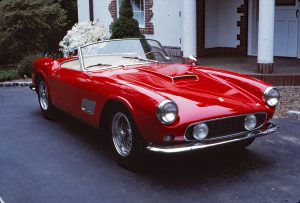
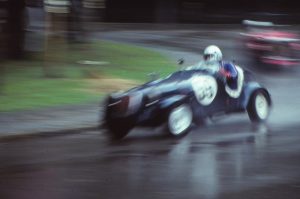
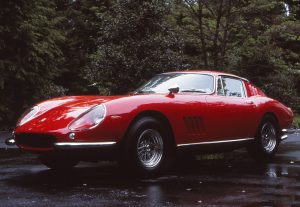
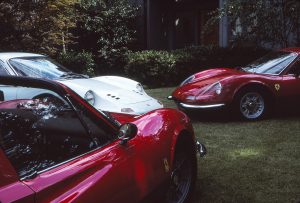
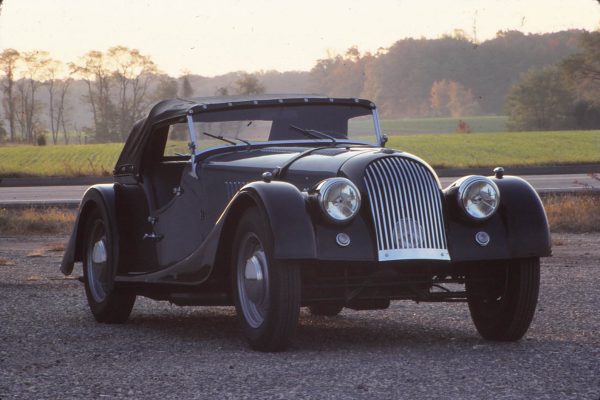
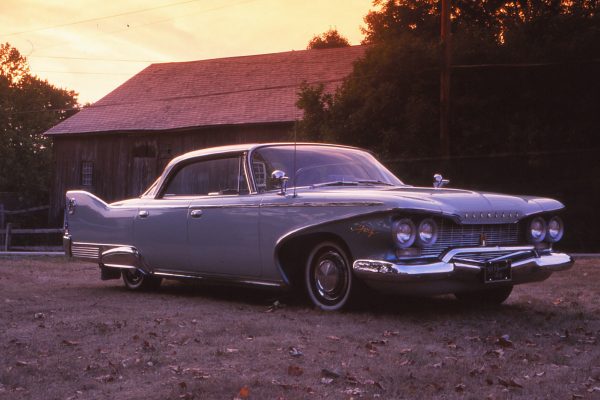
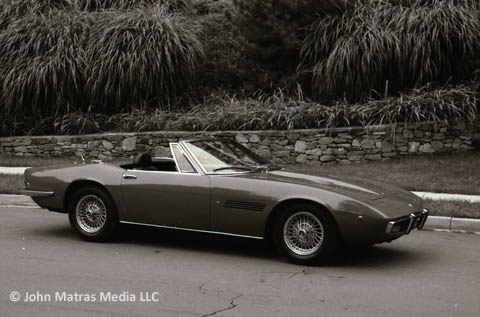
What Do You Think?
You must be logged in to post a comment.